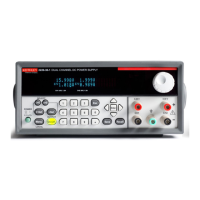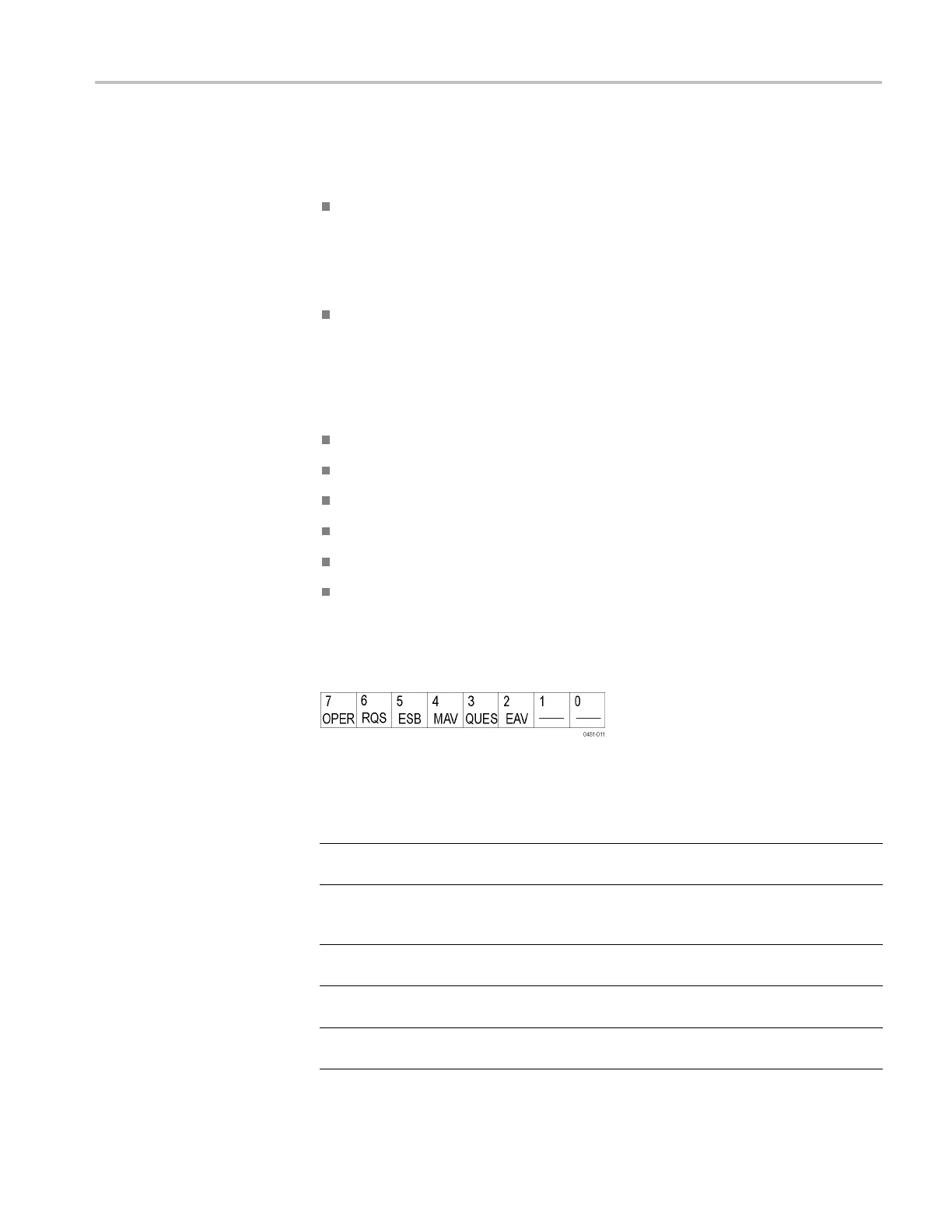Status and Events
Registers
The registers in the event reporting system fall into two functional groups:
Status registers contain information about the status of the power supply.
They include the Status Byte Register (SBR), Standard Event Register (SER),
the Questionable Status Register (QSR), the Questionable Instrument Status
Register (QISR), the Operation Status Register (OSR), a nd the Operation
Instrument Status Register (OISR).
Summary registers record high-level summary information reported in the
other register groups. They include the Questionable Instrument Summary
Register (QISUR) and the Operation Instrument Summary Register (OISUR).
Status Registers
There are six types of status registers:
Status Byte Register (SBR). (See page 3-3.)
Standard Event Register (SER ). (See page 3-4.)
Operation Instrument Status Register (OISR). (See page 3-4.)
Operation Status Register (OSR). (See page 3-5.)
Questionable Instrument Status Register (QISR). (See page 3-5.)
Questionable Status Register (QSR). (See page 3-6.)
The Status Byte Register (SBR). The SBR is made up of 8 bits. Bits 2, 4 and 5 are
defined in accordance with IEEE Std 488.2-1992. These bits are used to monitor
the error queue, output queue, and SER, respec
tively.
Figure 3-2: SBR bit functions
Table 3-1: SBR bit functions
Bit Function
7
OPER
Operation Status Bit. Indicates that an operation
event has occurred.
6
RQS
Request Service. Obtained from a serial poll. Shows
that the power supply requests service from the GPIB
controller.
5
ESB
Event Status Bit. S hows that status is enabled and
present in the SESR.
4MAV
Message Available. Shows that output is available
in the Output Queue.
3
QUES
Questionable Status Bit. Indicates that a
questionable e vent has occurred.
Series 2200 Programmable Multichannel DC Power Supplies Programmer Manual 3-3

